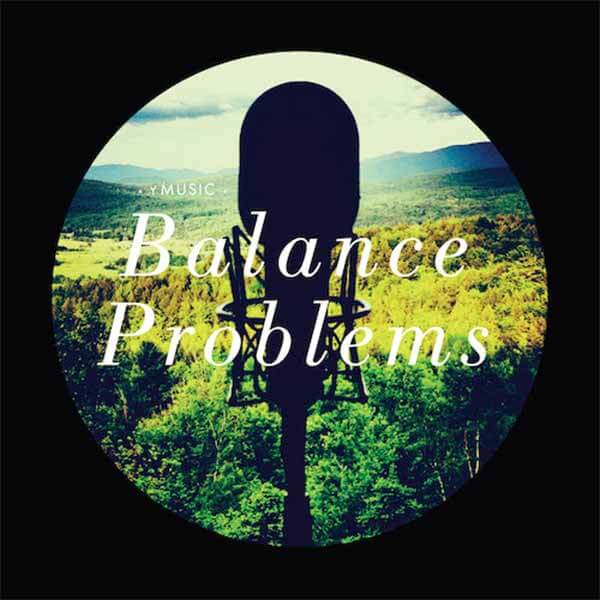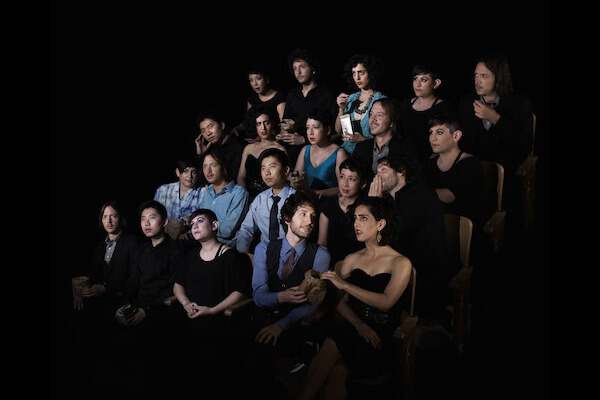
In the introduction to her 2013 book Chasing Sound, author Susan Schmidt Horning states: “The evolution of music recording from the art of capturing a performance to the art of engineering an illusion changed the sound of music…and ultimately, reversed the historic relationship between live and recorded music.” If ever there were a contemporary classical music album that demonstrated this shift in music recording from capturing a live performance to creating a technologically mediated work of art, it would be yMusic’s Balance Problems. The sophomore album from this New York City-based ensemble follows their 2011 album, Beautiful Mechanical (Time Out New York’s #1 Classical Record of the Year), and features new works by Nico Muhly, Marcos Balter, Andrew Norman, Jeremy Turner, Timo Andres, Mark Dancigers, and Sufjan Stevens.
With one glance at yMusic’s website, it is clear that this is no ordinary ensemble; each musician’s bio is bursting with accolades and performance credits that bridge the pop and classical music divide. These six instrumentalists (Rob Moose, Nadia Sirota, Clarice Jensen, Hideaki Aomori, Alex Sopp, and CJ Camerieri) are the young superstars of their generation, so one would expect a stellar collaborative product from such an ensemble. Balance Problems manages to exceed the sum of its parts as an outstanding sonic work of art, and this is largely due to the efforts of producer and mixing engineer Son Lux and his recording team.
Son Lux takes the inherent balance problems of this all-acoustic ensemble comprised of string trio, flute, clarinet, and trumpet and creates a texturally rich experience defined by the ebb and flow of each instrument’s individual timbre within the fabric of the ensemble whole. The close microphone placement allows the listener the opportunity to hear production noise that is often only audible to the performers: the grit of bows against strings, fingers plucking a pizzicato, the rebound of ricochet bowing, keys clicking, the breath of the wind players, and air in the tone that that a mere five feet of distance would eradicate. There is a degree of vulnerability to letting the audience this close to the performance, but yMusic invites us all in for this intimate listening experience.

yMusic
Most of the compositions on this album are minimalist in nature, and what makes them so successful is the simultaneous isolation of individual instrumental voices and the constantly shifting landscape of sound. The title track on the album by Nico Muhly takes advantage of the multi-instrumentalists in the ensemble and further expands timbral possibilities. Since the listener cannot see the performers, these shifts in instrumentation come as a surprise while somehow still growing organically out of the pre-existing texture. The ambient reverb on Marcos Balter’s “Bladed Stance” creates an ever-evolving seamless foundation of sound over which closely-miked solo lines are laid. Often times, these solo lines illuminate the methods of producing tone rather than the tone of the instrument itself: the clarinetist’s keys clicking, the flutist’s breath, or the string players’ bows against strings. Close microphone placement continues to play an important role in Andrew Norman’s “Music in Circles.” Part 1 of this work explores the sounds of cello harmonics and col legno bowing (striking the string with the wooden back of the bow). The scratch of the bow hairs and the striking of the wood against the strings remain the sonic hallmarks of this work as Part 2 incorporates the rest of the ensemble.
Son Lux exchanges grit for tonal beauty on Jeremy Turner’s “The Bear and the Squirrel.” This resonant texture is fitting for the most melodically-driven composition on the album and provides a stunning contrast to the emphasis on articulation exhibited in the rhythmically-driven works. On Timo Andres’s “Safe Travels,” each instrument is most clearly heard as it’s own separate entity rather than part of a blended ensemble. The instrumental voices are clearly distinguishable as independent lines, yet still work in tandem with one another. Mark Danciger’s “Everness” begins as the most texturally varied work on the album exploring the juxtaposition of articulated ostinato lines with singing melodic phrases but transitions to an atmospheric metrically-ambiguous layering of sounds. The album concludes with Sufjan Stevens’s “The Human Plague.” This work is a four-minute long rhythmic ostinato that relies on instrumentation, registral changes, and momentary highlights of different timbres to create the rise and fall of the musical line.
Balance Problems places the listener inside the process of performing chamber music, and the resulting deep listening experience is a direct product of the masterful use of recording technology. The listener is given the illusion of being surrounded by the ensemble at a mere arm’s length rather than being isolated to an area beyond the edge of the stage. Even considering the virtuosity of the performers on this album, a live performance could only hope to touch the lush sonic landscape of this recorded work of art which exists in a class of its own.





















